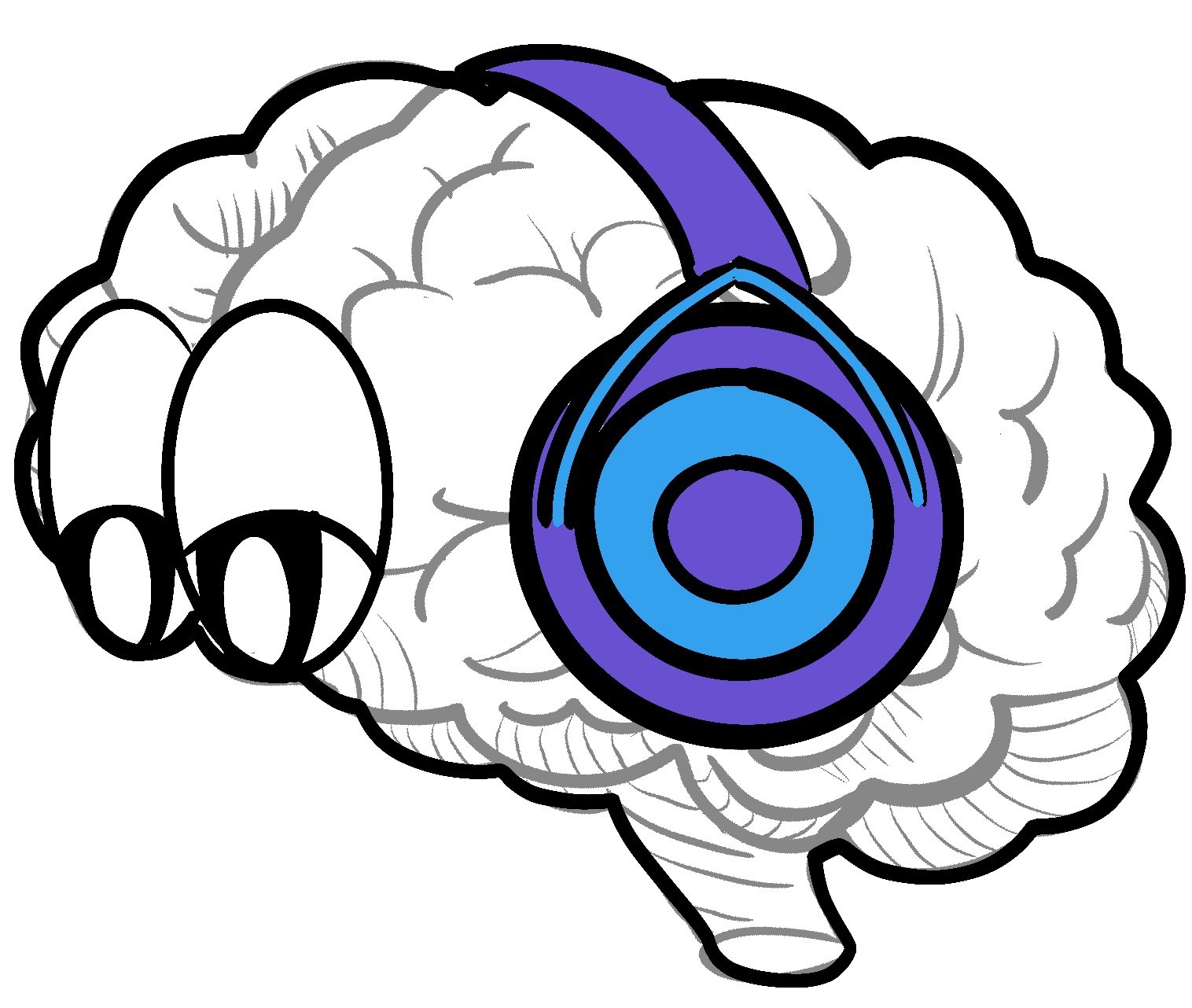What's New Got to Do with It?
How to Boost Your Motivation and Focus through the Power of Novelty
Novelty, that shiny beacon of the unknown, can be an exceptional catalyst for ADHD brains. Because of how novelty works in the ADHD brain’s reward system, it has the unique power to light a fire of passion, drive, motivation, and focus. But like any powerful ADHD strategy, it can go quickly awry. Read on to discover how to use this powerful force for good in your life.
You know the feeling- you're sitting at your computer gritting your teeth, trying to hold onto every inch of focus you can muster as you plow through the report your boss asked for last week. When suddenly it occurs to you- you really should figure out where you're headed for vacation next summer. And, presto! The quicksand that had trapped your brain's momentum disappears, and suddenly, your brain feels like a greyhound on an all-out chase of a runaway rabbit.
What happened? Why is it that the allure of the new and fresh ignites your brain when other tasks- even those that were fun and exciting a short while ago, leave it feeling like a sloth on tranquilizers?
Let's dive in and find out!
Novelty as a Catalyst: Igniting Passion and Drive in ADHD Brains
All brains are wired to seek out and thrive on novel experiences—it goes back to our primitive hunter-gatherer days when it was essential to our survival that we keep finding new and plentiful resources (1). But for ADHD brains, this innate attraction to novelty is even more exaggerated. Fresh experiences and environments can help refuel an ADHD brain, turning it from a sluggish tractor plowing through mud into a supercharged race car.
In fact, research shows that ADHD brains pay greater attention to novel or surprising stimuli than neurotypical brains. Not only that, but the magnetic pull of novelty is even stronger when there is a reward connected to that new information or stimuli. (2).
It's, therefore, unsurprising that ADHD brains engage with, pay attention to, and are naturally attracted to novel stimuli and that incorporating novelty is a great way to stimulate motivation focus.
The Science Behind Novelty: Why It Works for ADHD Brains
But why is novelty such a powerful force for ADHD brains? Well, in order to answer that, we need to do a quick dive into the science of the brain (it'll be painless- I promise!).
At their base, ADHD brains have a different way of managing dopamine- the neurotransmitter most important in reward, motivation, attention, and focus. They tend not to release or use it as efficiently as neurotypical brains. This inefficiency tends to make ADHD brains dopamine-hungry. It's like they're walking through a hot desert, and while they have a bottle of water (dopamine) handy, the straw they have to drink it through is teeny tiny and takes a lot of effort to get a drop through.
So we've got these dopamine-inefficient brains thirsty for something, anything to fuel it. And guess what's a surefire shot of dopamine?!? You got it- novelty! So our dopamine-thirsty brains become like heat-seeking missiles, trained on the new, exciting, and surprising things in our world that can feed our brains.
We see this in the lab- when given something new, the reward centers of ADHD brains look like a Christmas tree decked out in holiday lights, whereas neurotypical brains just show a mellow glow.
All that light feeds the reward center and gives the thirsty brain exactly what it craves, helping it tune in, engage, and stay motivated for as long as that novelty lasts.
The Newness Trap: The Darkside of Novelty for ADHD Brains
As wonderful as it is to have novelty feeding our hungry brains. The fact that it does it so well is tricky, too- right? Because our brains just want more and more- which can lead to:
Distraction
The lure of something new and exciting can be endlessly distracting- causing us to jump from one new idea or task to the next. In fact, that ADHD brains actually respond MORE strongly to the dopamine surge of novelty than neurotypical brains is one of the key reasons they are so much more prone to distraction.
Unfinished Tasks
Let's face it. The internal reward of a quick novelty-fueled dopamine shot is way more appealing than the low hum of satisfaction that we get from finishing an ongoing task or project. And so our pile of half-finished projects grows while we go on a wild hunt for newness over and over again.
Novelty Seeking Cycles
It makes sense that something that lights up our reward centers like a night sky on New Year's Eve would create an addiction-like cycle. With each new interest, our brains are rewarded with a flood of dopamine. Repeated spikes and dips in dopamine levels can lead your brain to start craving novelty just to experience that rush again and again- creating an exhilarating but ultimately exhausting cycle.
Harnessing the Power of Novelty: Strategies for Motivating ADHD Brains
So it's clear that novelty is powerful- it turns an ADHD brain on like few other things can. This is a great thing- we have something that works, and it works incredibly well. But like all things, on the flip side of the strength is vulnerability- to distraction, half-finished projects, and constant novelty seeking.
So, how do we use this power for good while protecting ourselves from its downside? Let's explore:
Break the Routine
Routines are great for ADHD because they reduce the executive functioning demands of life. But they can get a bit dull. A little sprinkling of magic novelty dust can go a long way to help keep a routine alive. A 2020 study by Saunders et al. showed that even the simplest deviations from routine - a new route to work or a different cuisine for dinner - caused significant improvements in mood and attention. (3)
Embrace New Hobbies and Activities
You've no doubt experienced this- you're feeling stuck and low and somehow stumble into a new hobby or activity that captures your interest, and BAM! It's like you suddenly feel like yourself again! It's all because dipping your toes in fresh hobbies gives us a happiness and creativity boost. Research supports this, too- finding that unfamiliar activities stir positive moods and spark creativity (4).
Gamify It
There's a reason every ADHD app has you planting trees, earning badges, or winning awards- because those incentive systems utilize the powerful force that is novelty— keeping us engaged and fulfilled. And, of course, all the tech giants have plenty of research to back up that these rewards and ramifications work to keep people motivated, engaged, and willing to complete tasks. (5)
But you don't need Steve Jobs to design your life in order to utilize the power of gamification. Finding ways of building in incentives and challenges can be as simple as:
creating time challenges (I think it will take me 3 minutes to do x)
assigning points to tasks (dishes are worth 15, folding a load of laundry is 25)
joining an incentive app like Way Better
chore bingo
Inject some Novelty around You
It sounds minor but even the slightest tweaks in work environments, like lighting or temperature adjustments, have been found to significantly improve focus and productivity(6). So try sitting in a different spot, bring in a new candle to work, add some all-spectrum lighting, or take your laptop to a new cafe- changing the scenery can invigorate your novelty-seeking brain.
Get your Senses Involved
On a related note- adding in some novelty through your senses is a great way of hacking this system and giving your brain that boost that it craves. Fidget spinners, weighted blankets, treadmill desks, and aromatherapy are all sensory-based strategies with data to back them up.
Take a (Outdoor if possible) Break
We can't always inject novelty into our tasks, and sticking with monotonous and routine tasks can leave our brains feeling pretty parched and depleted. That's where quick breaks come in handy. Taking a short walk outside or another type of 3-5 minute break has been found to not just increase attention and motivation (9) but creativity, too (8).
Embrace other perspectives
Adding different people or perspectives to a task that is no longer new can be a great way of adding some of that allure sparkle back in. In fact, research shows that ADHD brains might respond to the benefit of collaboration even more than neurotypical brains because they are more sensitive to social reward. So, go attend that workshop, grab a friend to talk through a project, or team up to tackle a new problem- let the spontaneity and variety that comes from social interaction quench your brain's thirst for novelty.
So there you have it - the spark that fuels the engine of the ADHD brain is often novelty. The thrill of new experiences can ignite passion and drive and help navigate the tricky terrain of motivation. But of course, like all ADHD strategies, it's a power that needs to be used intentionally so we can benefit from it without letting it trip us up.
So now it's your turn- What's your go-to strategy for injecting novelty into your day? How do you keep your ADHD brain firing on all cylinders? Post your insights in the comments below—we can't wait to read about your wins and maybe add some new tools to our own strategy kits.
-
Anderson, B. A., Laurent, P. A., & Yantis, S. (2011). Value-driven attentional capture. Proceedings of the National Academy of Sciences, 108(25), 10367-10371. https://doi.org/10.1073/pnas.1104047108
Fisher, D. M., Grana, V. A., & Barkley, R. A. (2014). The role of novelty and reward in the distractibility of children with attention-deficit/hyperactivity disorder. Journal of Abnormal Child Psychology, 42(7), 1153-1165.
Saunders, B. E., Whitaker, K. D., Smith, D. G., & Carlson, S. M. (2020). Micro-novelty disruptions improve mood and attention in children with ADHD. Journal of Abnormal Child Psychology, 48(8), 1741-1752. doi:10.1007/s10802-020-00571-4
Isen, A. M., & Daubman, C. A. (1985). The sunny side of surprise: Positive affect moderates the negativity induced by physical pain. Journal of Personality and Social Psychology, 49(2), 1171-1178. doi:10.1037/0022-3514.49.2.1171
Andrade, A. (2007). A meta-analysis of the effectiveness of extrinsic incentives for improving academic achievement. Psychological Bulletin, 133(2), 240-274. doi:10.1037/0033-2909.133.2.240
Hamari, J., Koivisto, J., & Fransman, H. (2016). Designing gamified learning experiences for elementary school students: The case of MySkillCity. International Journal of Technology, Knowledge, and Learning, 11(2), 339-354. doi:10.14705/ijtekl2016v11i2024
Hedge, S. G., & Sampson, W. A. (2013). The effects of a physical environmental intervention program on the self-reported productivity of knowledge workers. Environment and Behavior, 45(4), 650-678. doi:10.1177/0013916512449530
Oppezzo, M., & Wild, K. L. (2010). Media multitasking during encoding activates the default mode network and impairs encoding, Retrieval, and fluid intelligence. Journal of Experimental Psychology: General, 139(4), 403-409. doi:10.1037/a0019305
Küçükkafa, R., Küçükkafa, Z., & Ünal, M. S. (2011). The effect of short breaks on attention performance in young adults with attention deficit hyperactivity disorder: an event-related potential study. Clinical Neurophysiology, 122(12), 2406-2415.
Ashdown, P., & O'Connor, R. (2014). Social dynamics and attention deficit hyperactivity disorder (ADHD): New directions for research and intervention. Frontiers in Psychology, 5, 844.
Zentall, T. R., Grskovic, J., Javorsky, J., & Hall, S. S. (2000). Children with attention deficit hyperactivity disorder: Effects of weighted vests on attentional focus, frustration, and activity level. American Journal of Occupational Therapy, 54(4), 393-399.
Hartanto, A., et al. (2016). Using fidget spinners to improve on-task classroom behavior for students with ADHD. Journal of Positive Behavior Interventions, 18(3), 168-179.
Ready to shift from meltdown to mastery?
This online course has been designed specifically to help teach the strategies ADHD brains need to help them move from overwhelm and meltdowns to confident emotional mastery.
Want to know more about
thriving with ADHD?
Check out these other articles:




















Brain.fm Review: Can Focus Music Really Help Your ADHD Brain Stay on Track?